Cable lacing bars, also called lacer bars, consist of a metal bar that mounts to the rear of a standard 19″ rack or cabinet, behind a patch panel. These bars provide support and management of cables that are secured to the bar with cable ties or adjustable clips. Each cable lacing bar occupies 1/3 to 2/3 of a rack space and can secure and manage up to 24 cables in 1 RU. They are usually used to support and manage cables in telecommunication rooms, which provide strain relief, bend radius control, superior aesthetics and improve organisation and routing of cable.
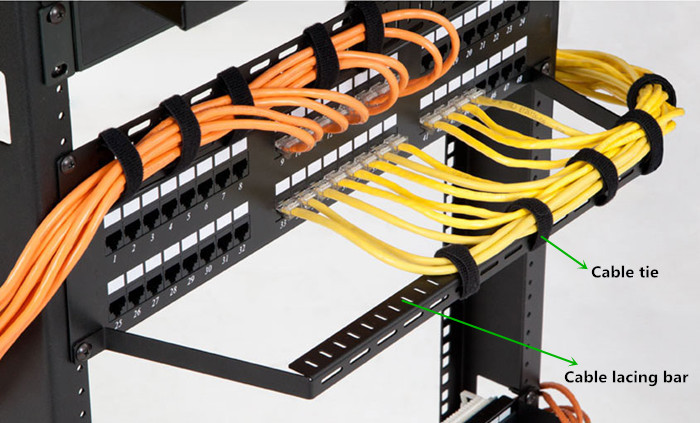
How to Use the Cable Lacing Bars?
In fact, the process of installing a cable lacing bar is very easy. As shown in the figure below, we only need to install the cable lacing bar to the rack firstly, and then use the cable tie to fix the cables to the cable lacing bar.
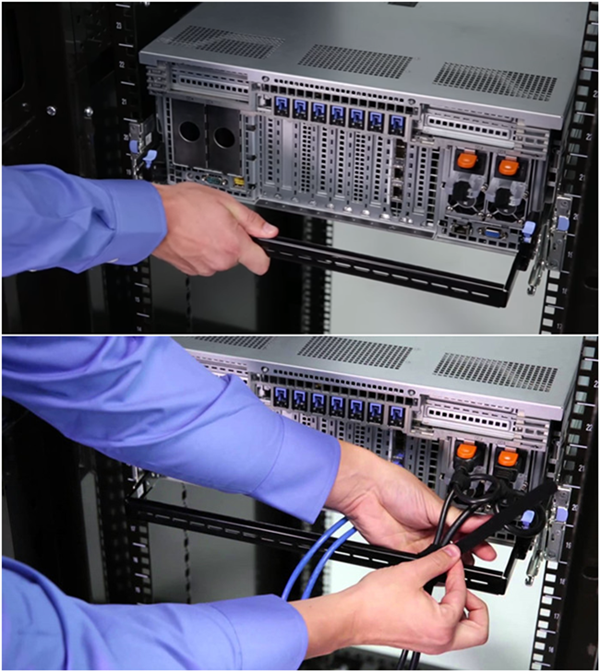
Which Type Cable Lacing Bars Should I Choose?
In order to meet different cabling management needs, there are also many different cable lacing bars available in the market. Below some common cable lacing bars are listed, and you can choose the right one for your network according to your specific cabling environment.
1. Round Lacer Bars
Use the 1RU round lacer bar when a small profile is required and for lacing small or individual horizontal cable runs. 1/4” diameter rod with flattened ends.

2. Rectangular Lacer Bars
Use the 1RU aluminum lacer bar when lacing cables vertically or horizontally. Aluminum construction provides the ability to drill holes to attach tie saddles, mount electrical boxes, etc. This lacer bar can also be used to support the rear of equipment. 1/4” diameter rod with flattened ends.

3. L-Shaped Lacer Bars
“L” shaped lacer bars are strong and provide fixed tie points. Recommended for larger runs of cable. They are available in 2”, 4” and 6” offset. Choose the appropriate offset bar based on the distance from the rear of equipment to the rack rail.
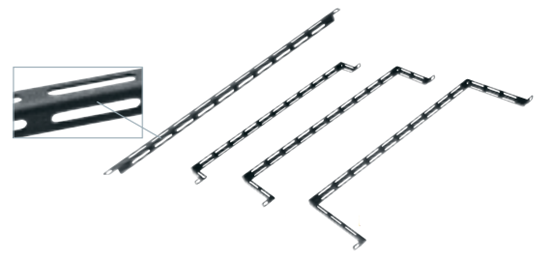
4. Round Lacer Bars with Offset
Use the round lacer bar with offset when lacing small bundles or individual cables off the rear of equipment, patch panels and other components to relieve cable stress from the connections. They are available in 1.5” offset and 4” offset respectively (figure below). Choose the appropriate offset based on the distance from the rear of equipment to the rack rail. 1/4” diameter rod with flattened ends.
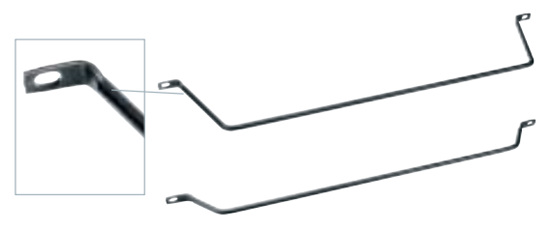
5. 90º Bend Lacer Bars
These 90° bend offset lacer bars are similar to other offset round lacer bars, but feature 90° bends to provide full-width support. Can also be used to provide clearance around components that extend past the rear rack rail (16-5/8” open width). 1/4” diameter rod with flattened ends.
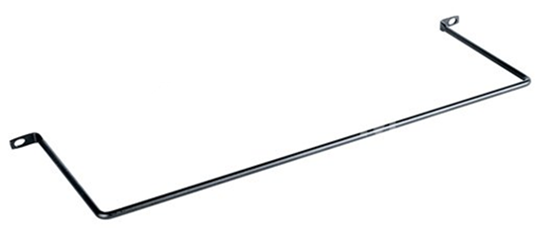
6. Horizontal Lacer Panel
Use the horizontal lacer panel for lacing large amounts of cable or mounting devices. Two rack space high, the horizontal lacer panel features a large flange, numerous cable tie points and more surface for mounting.
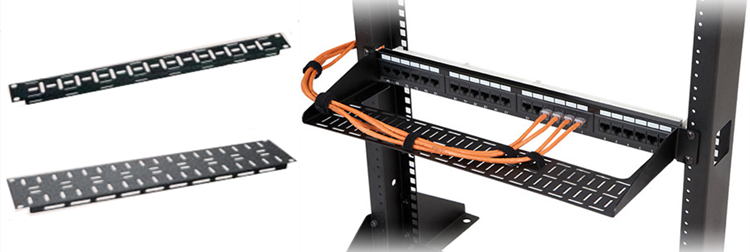
Cable lacing bars are a useful and cost effective cable management solution for rack or enclosure systems. These bars are essential in helping avoid cable strain especially when trying to run cables from one side of the enclosure to the other. FS.COM offers a full line of cable lacing bars to fit a variety of applications offering end users flexibility and convenience to prevent cable strain. Higher density applications may be addressed with FS.COM cable manager.
